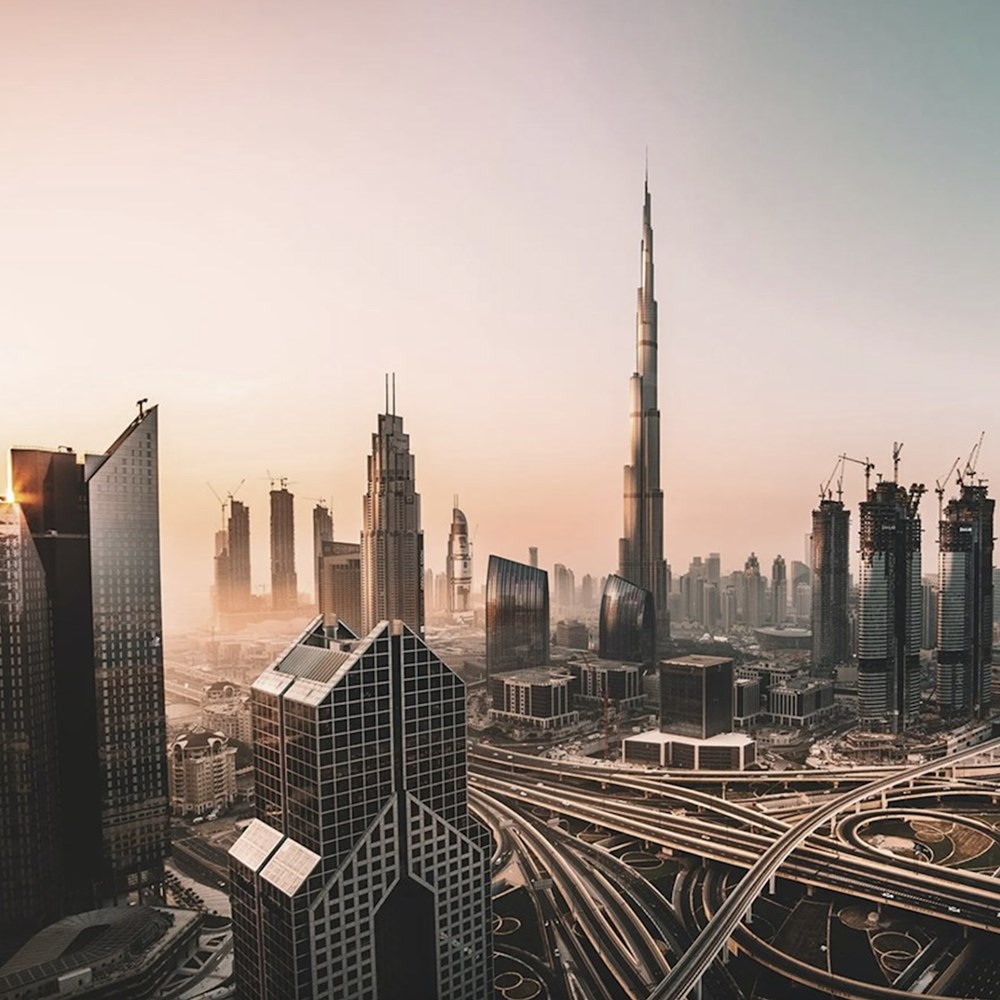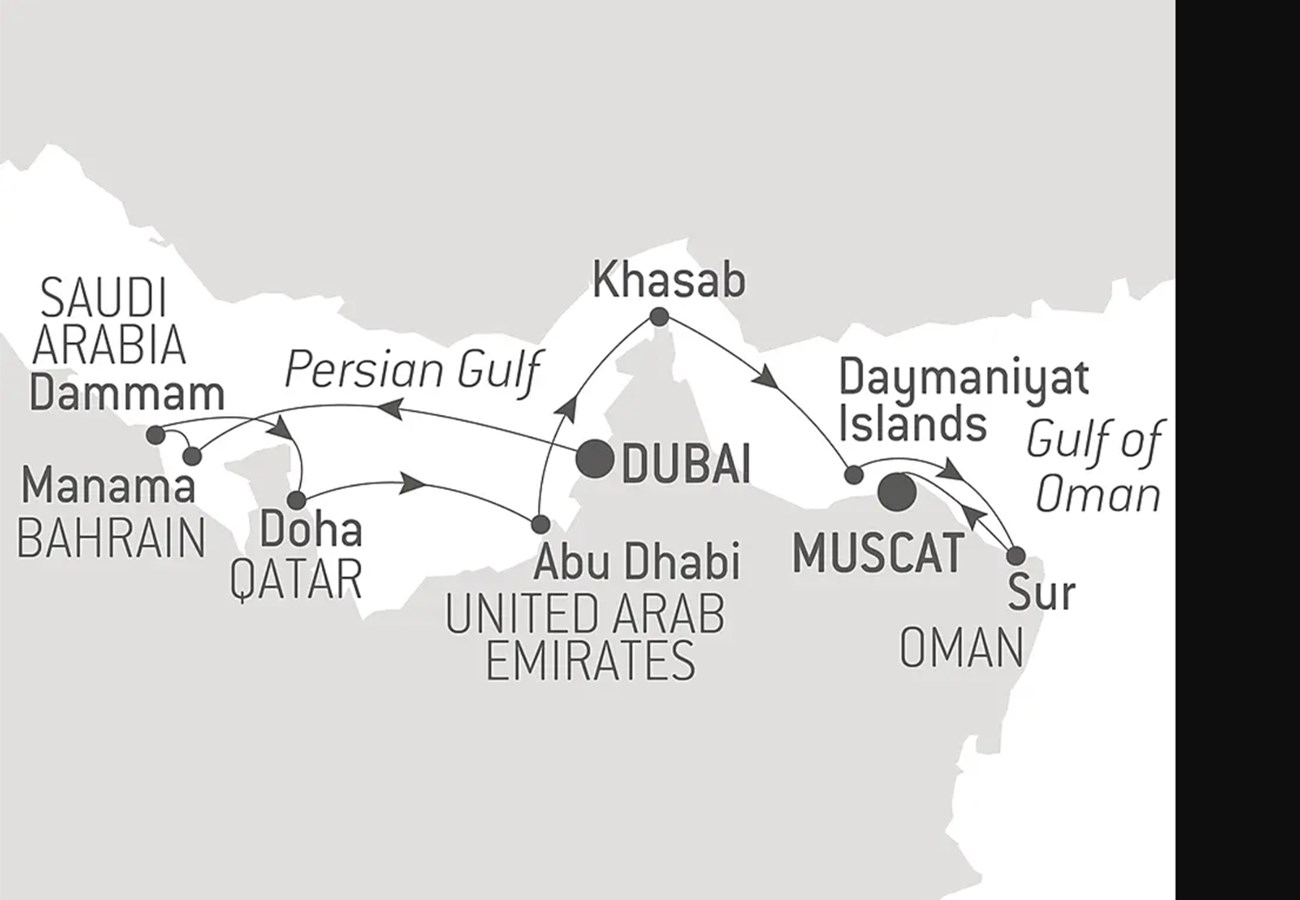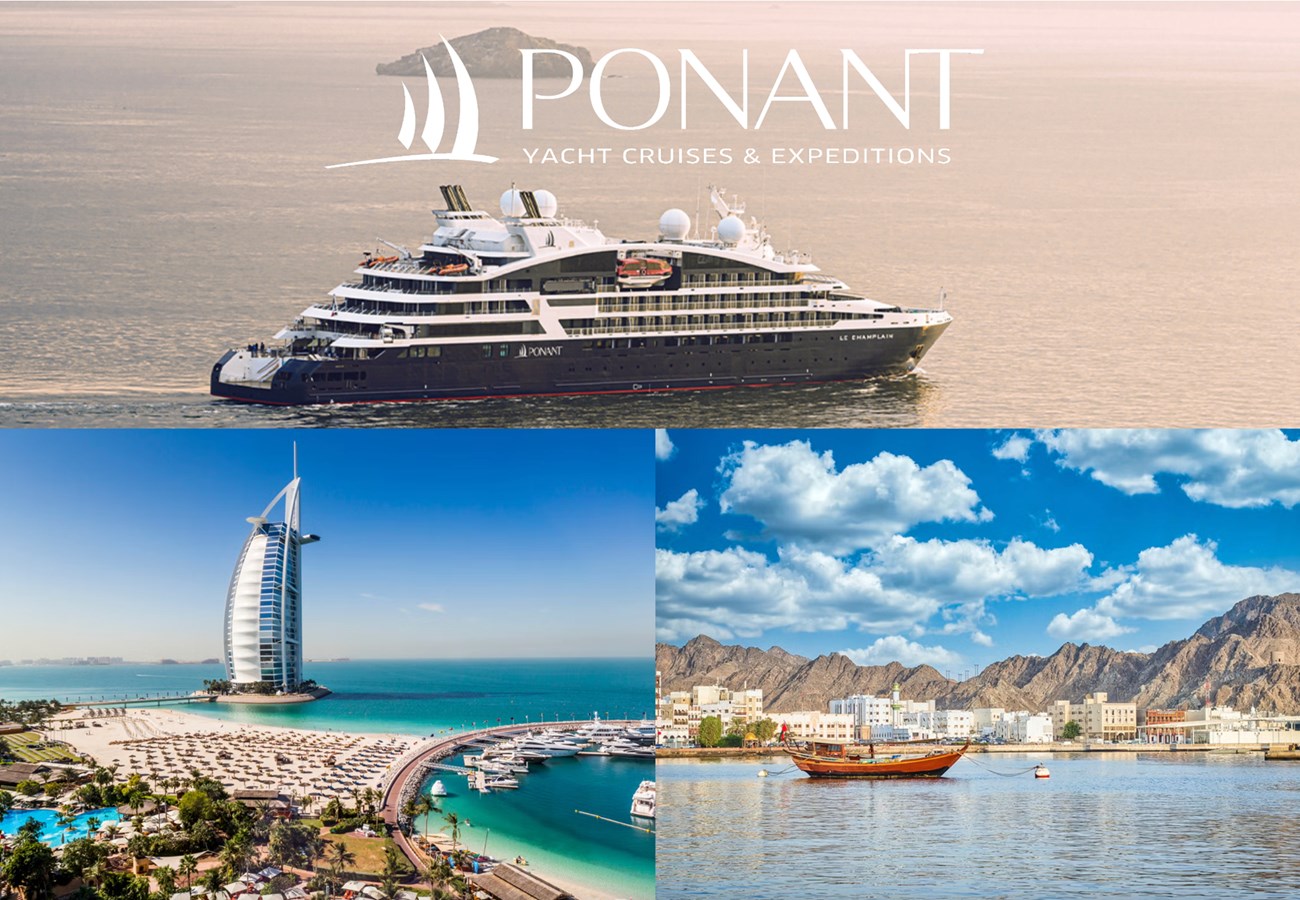
Ponant Arabian Cruise Ponant
Ponant Arabian Cruise
Ponant welcomes you for a 11-day cruise in the Eastern part of the Arabian Peninsula visiting Saudi Arabia, Bahain, Qatar, the UAE and Oman.
PRICES FROM £7,400 PP
PRICE INCLUDES:
ECONOMY CLASS FLIGHTS
PRIVATE AIRPORT TRANSFERS
3 NIGHTS AT ONE&ONLY ROYAL MIRAGE
2 NIGHTS AT THE CHEDI MUSCAT
STAYING IN A DELUXE STATEROOM
ALL INCLUSIVE ON SHIP
ONE COMPLIMENTARY SHORE EXCURSION PER PORT, PER DAY
WI-FI AND GRATUITIES
20th November - 5th December
Dubai - Bahrain - Saudi Arabia - Qatar - Abu Dhabi - Oman
ITINERARY
20th - 23rd November
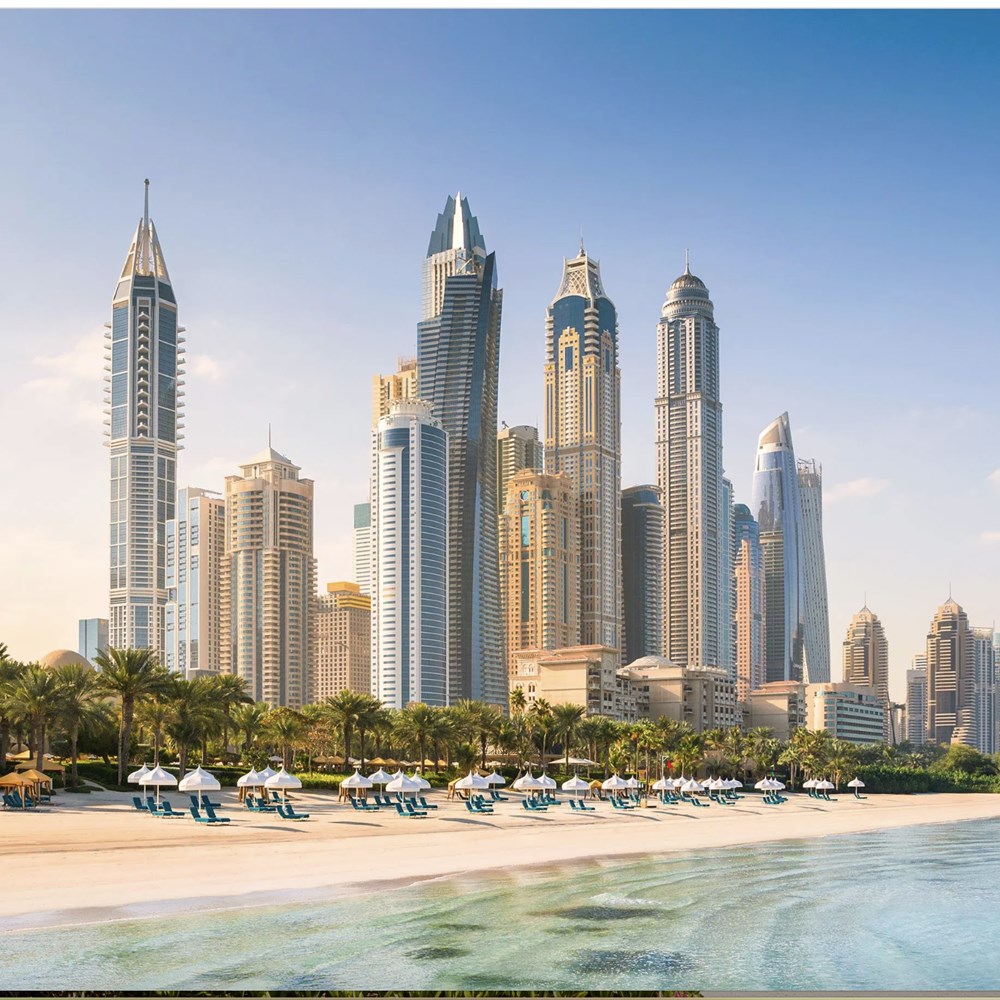
Dubai
Stay 3 nights at One&Only Royal Mirage in a Palace Room with Breakfast
23rd November
24th November
Day at Sea
25th November
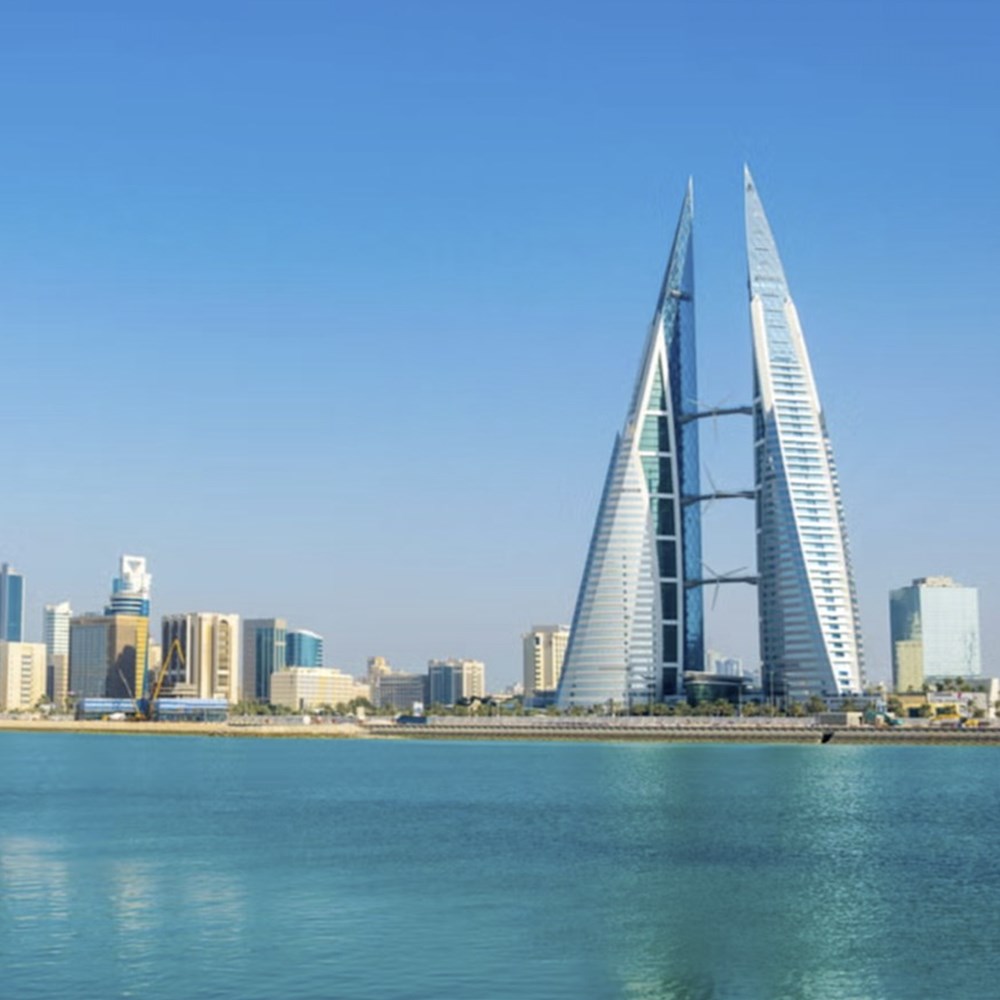
Manama, Bahrain
At the crossroads of trade routes since ancient times, Manama, the capital of Bahrain, still bears traces of what were, for centuries, the pillars of the economy in the Persian Gulf: pearl harvesting, and the construction of traditional sailing vessels called dhows. But the major draw of this small island in Bahrain is undeniably the vestiges of human presence dating back nearly 5,000 years. The ancient harbour and capital of Dilmun, Qal'at al-Bahrain, is, along with the Dilmun Burial Mounds scattered across the island, an essential relic of this Mesopotamian civilisation. Both are listed as UNESCO World Heritage. This tumultuous history now gives this small territory rich influences.
26th November
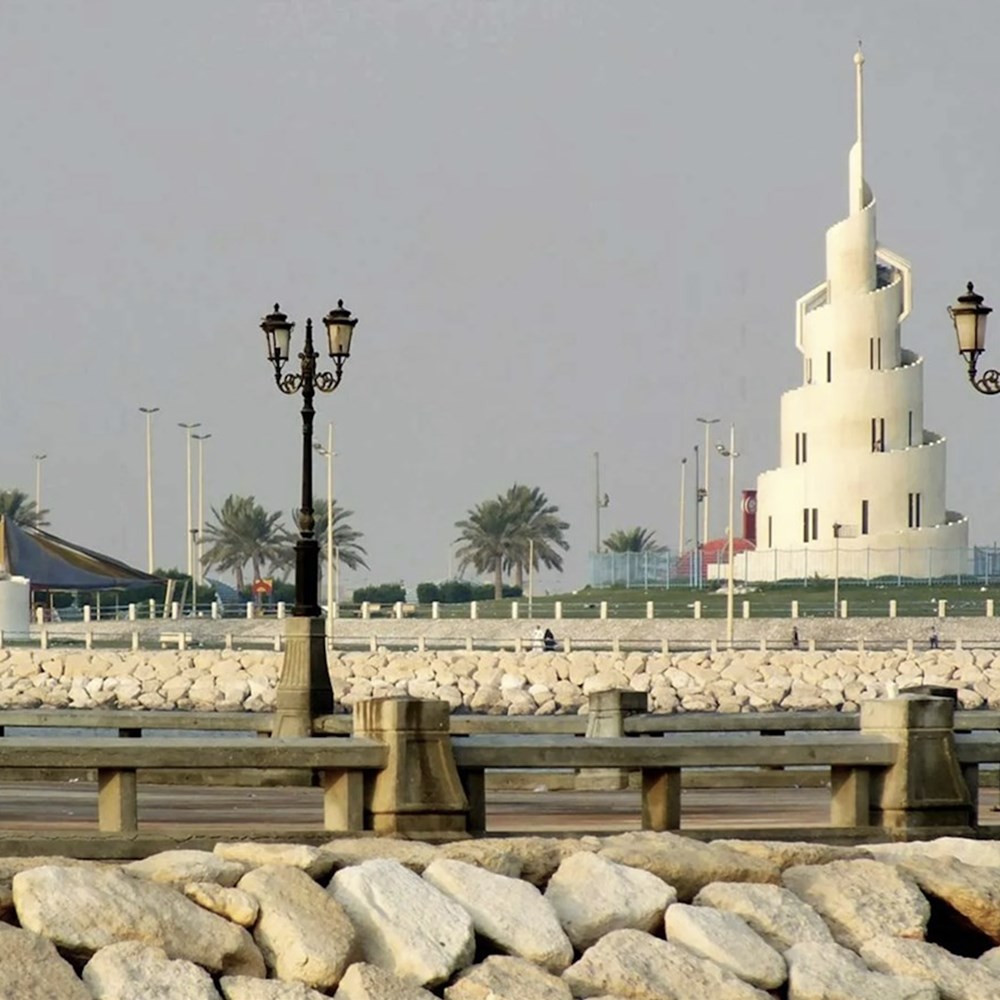
Damman, Saudi Arabia
On the Saudi shores of the Persian Gulf, Dammam reveals its winding coastline, home to fine-sand beaches and pleasant seafront. The capital of the Eastern Province of Ash-Sharqiyah boasts a prime position along the calm waters of the Arabian Gulf. Edged with rows of palm trees facing the sea, this modern city is also the gateway to the beautiful Al-Ahsa Oasis. Take an optional excursion into the world’s largest oasis to see verdant gardens planted with countless palm trees, a sophisticated irrigation system, and archaeological sites attesting to human presence since the Neolithic period. The extraordinary landscape is listed as World Heritage by UNESCO.
27th November
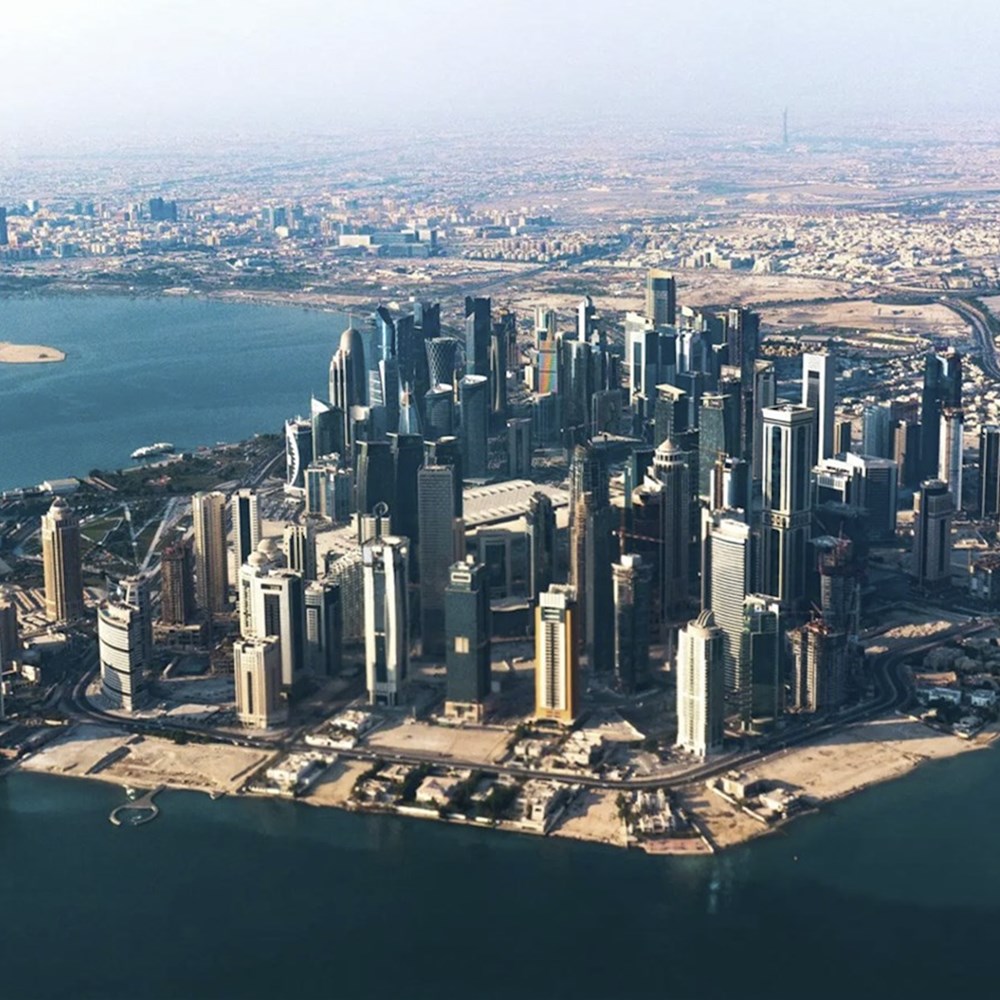
Doha, Qatar
On the banks of the Persian Gulf, discover Doha, the capital of Qatar. Rising out of the desert, the city has managed to maintain its traditions in spite of a frantic race for modernity. The cliff bordering Doha Bay has magnificent views over the city centre’s enormous constructions. The silhouette of the Museum of Islamic Art rises up near the quays, where the region’s typical sailboats, known as dhows, are docked. This “fortress”, designed by Ming Pei, the architect of the Louvre pyramid, is home to the finest collections of Islamic art in the world. Not far, the lively district of Souq Waqif and its colourful stalls are also an unmissable visit.
28th November
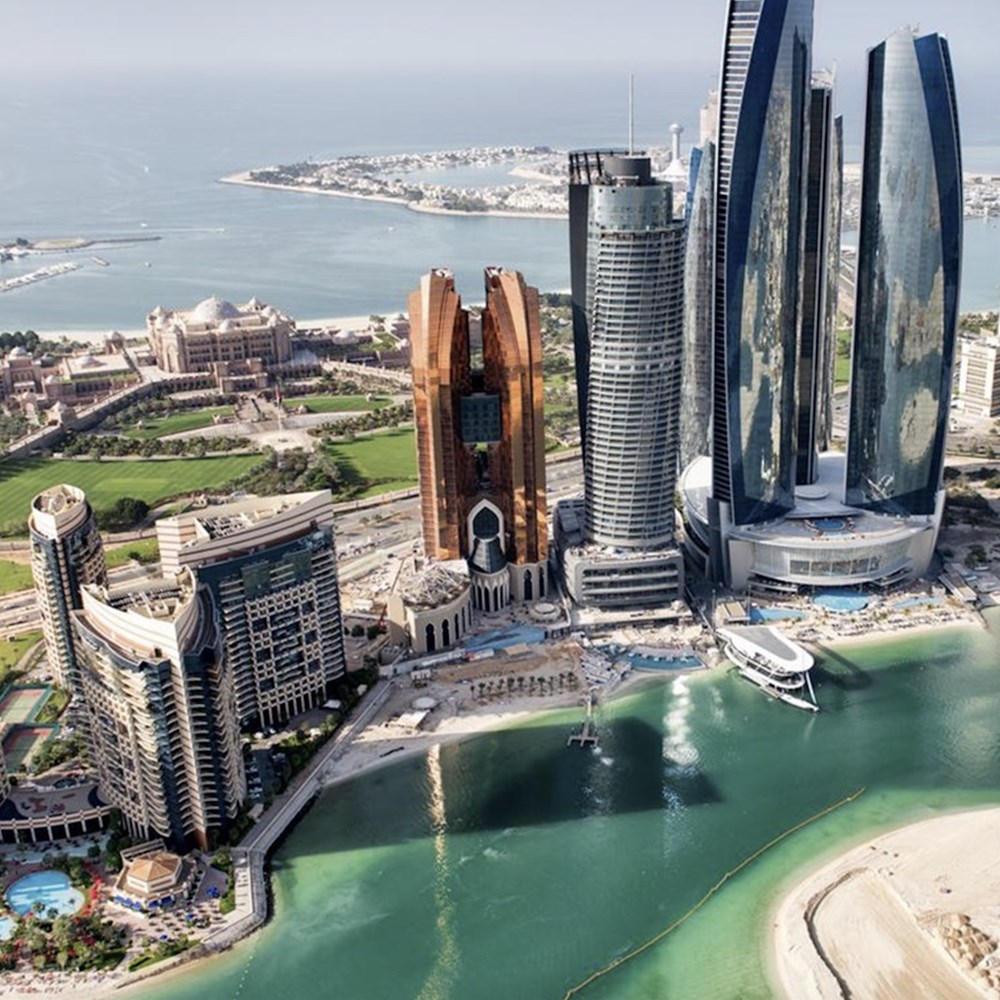
Abu Dhabi
The political capital of the United Arab Emirates, Abu Dhabi stands out thanks to its exceptional cultural offering. In the Saadiyat Island district, the Louvre Abu Dhabi, designed by Jean Nouvel as a museum town inspired by traditional Arab architecture, creates a dialogue between objects and works from civilisations from all over the world around the great universal questions. A little further, the Sheikh Zayed Grand Mosque boasts a sumptuous decor of marble, gold and glass. Abu Dhabi is also the gateway to the Al Ain oasis and its 150,000 date palms, a remarkable testimony to the settling of nomads in the region since Neolithic times, and a UNESCO World Heritage Site.
29th November
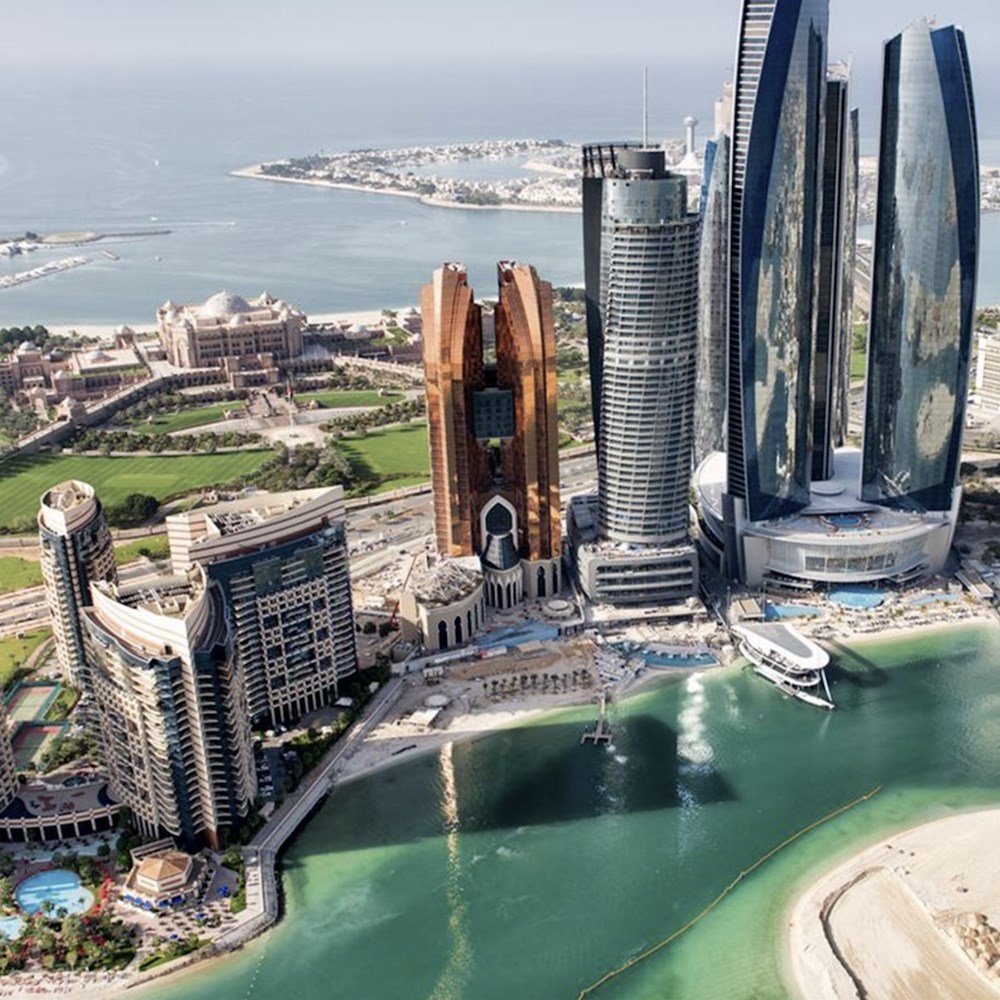
Abu Dhabi
30th November
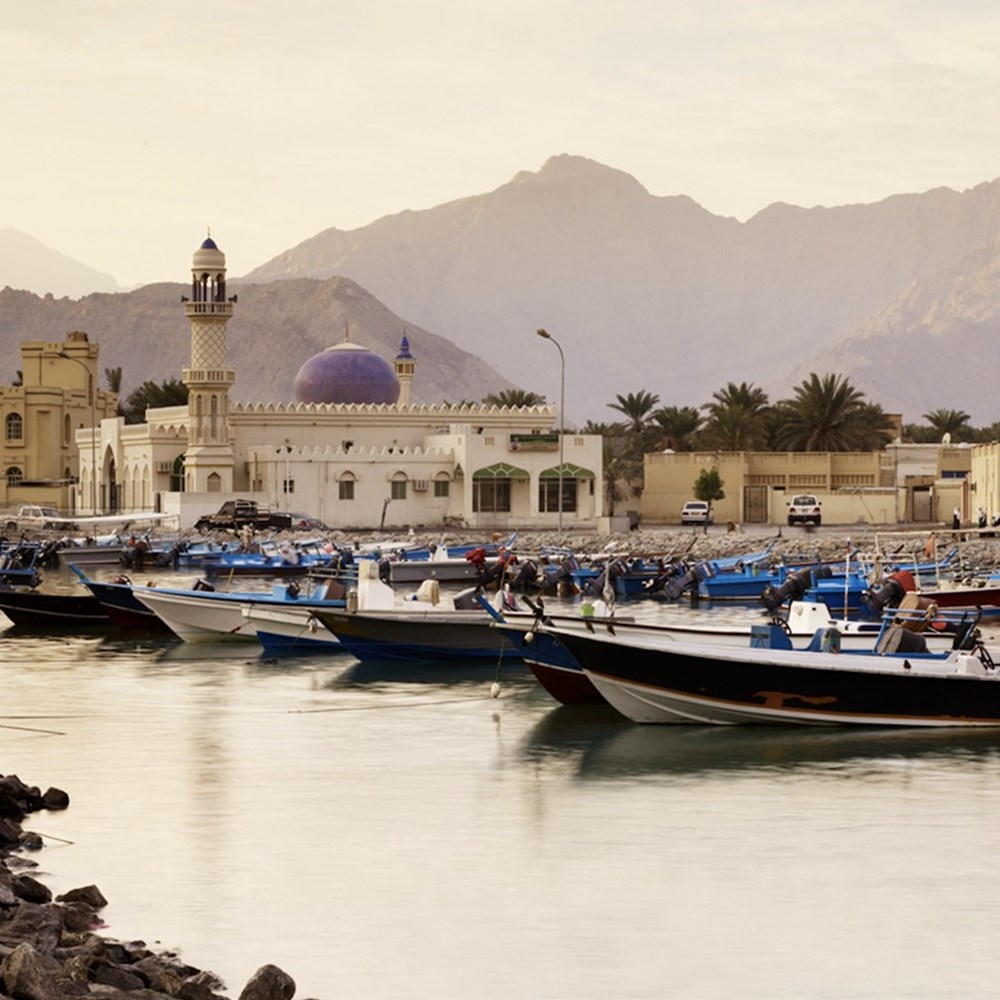
Khasab, Oman
Located in the country’s north, on the Musandam Peninsula, Khasab is a city in the Sultanate of Oman. In the Strait of Hormuz, which connects the Persian Gulf to the Gulf of Oman, this small port built by the Portuguese in the 16th century and surrounded by a chain of rocky mountains was established at the mouth of Wadi Khasab. You will love its authentic scenery and particularly its fjords, which cut through the landscapes in a spectacular fashion and have earned it the moniker “Norway of Arabia”. In the city, Khasab Castle and its atypical architecture are well worth a visit to discover the history and culture of Oman.
1st December
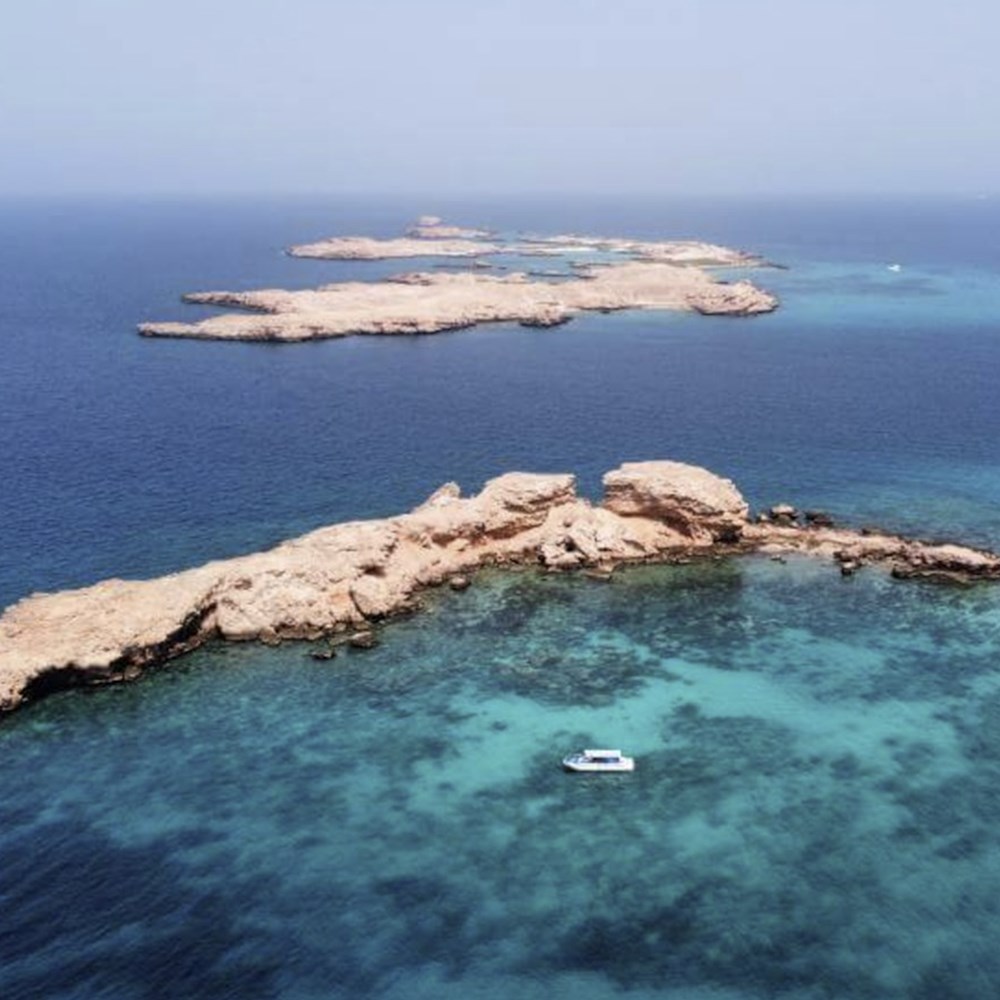
Daymaniyat Islands, Oman
Set atop the turquoise waters of the Gulf of Oman, the Daymaniyat Islands have been a nature reserve since the 1980s. Some forty kilometres (25 miles) off the coast from Muscat, the Omani capital, their craggy coastlines form natural pools home to an incredible biodiversity. The different types of coral reefs that dot this ecosystem, the turtles that nest there, and the numerous species of fish make this an ideal destination for snorkelling. This rocky landscape is also the favourite spot of many birds, both endemic and migratory.
2nd December
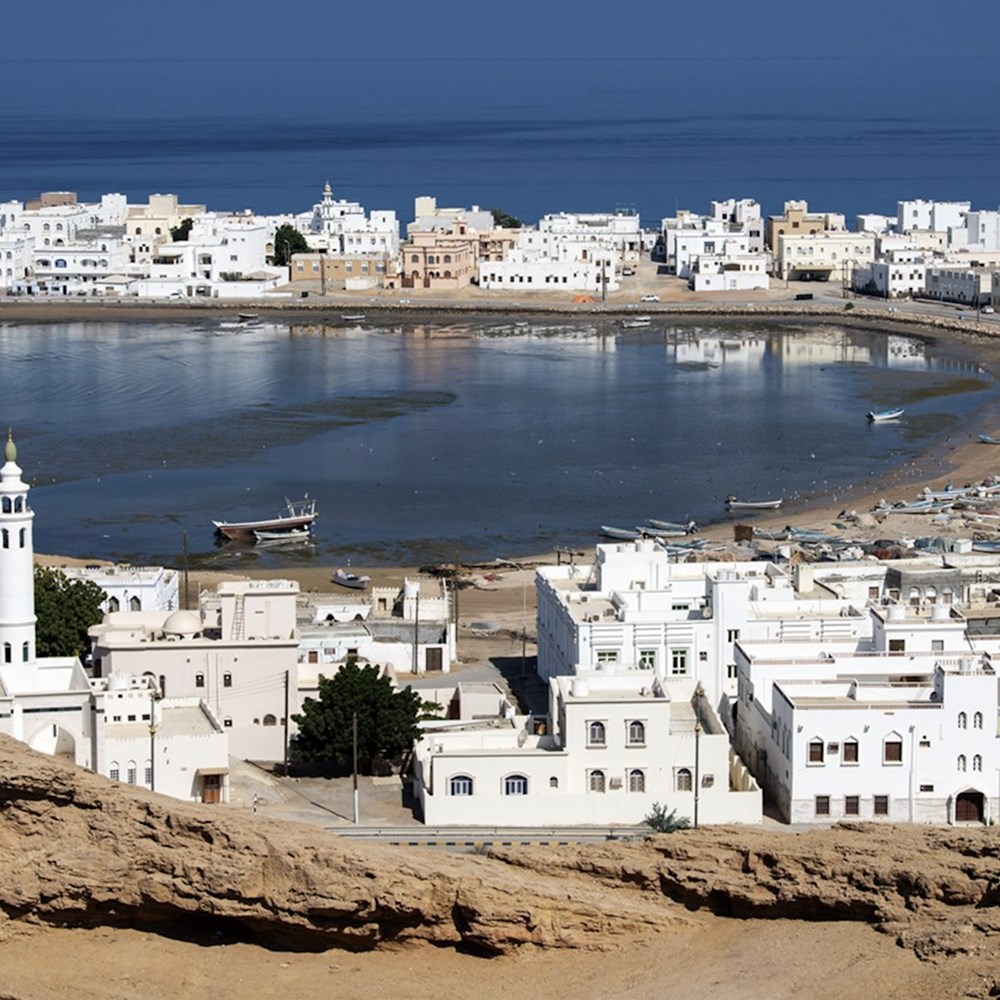
Sur, Oman
Built on either side of a lagoon, Sur is a city and seaport in the north-east of the Sultanate of Oman, on the coast of the Gulf of Oman. Connected to the sea by a channel, the port was very active for a long time, having regular dealings with Africa and India since the 6th century. Sur is renowned for being the only Omani city to have retained its traditional boatyards, where dhows (wooden sailing ships) are hand-crafted. The city’s charm stems from its immaculate white houses dotting the seafront and from its fort erected on a hill along the road to Muscat.
3rd December
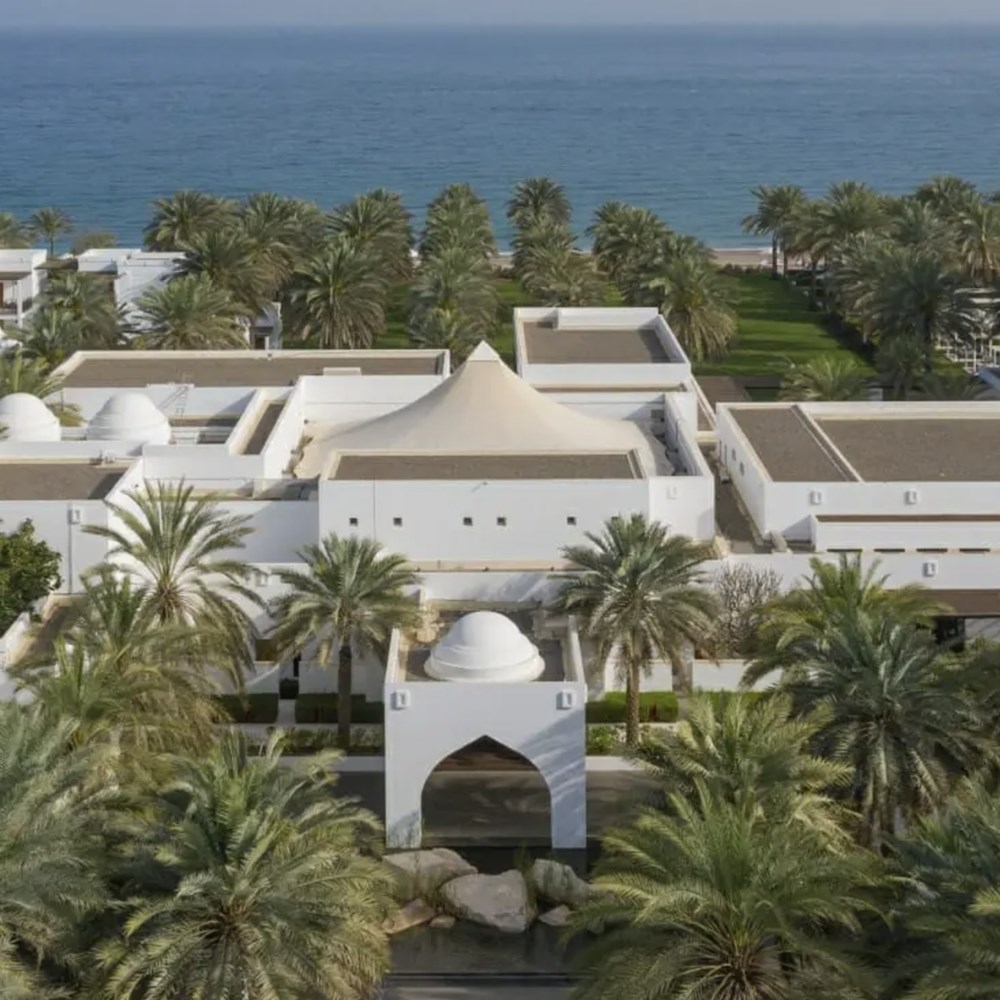
Arrives Muscat, Oman
Stay 2 nights at The Chedi Muscat in a Serai Terrace Room with breakfast
Accommodation: The Chedi Muscat


